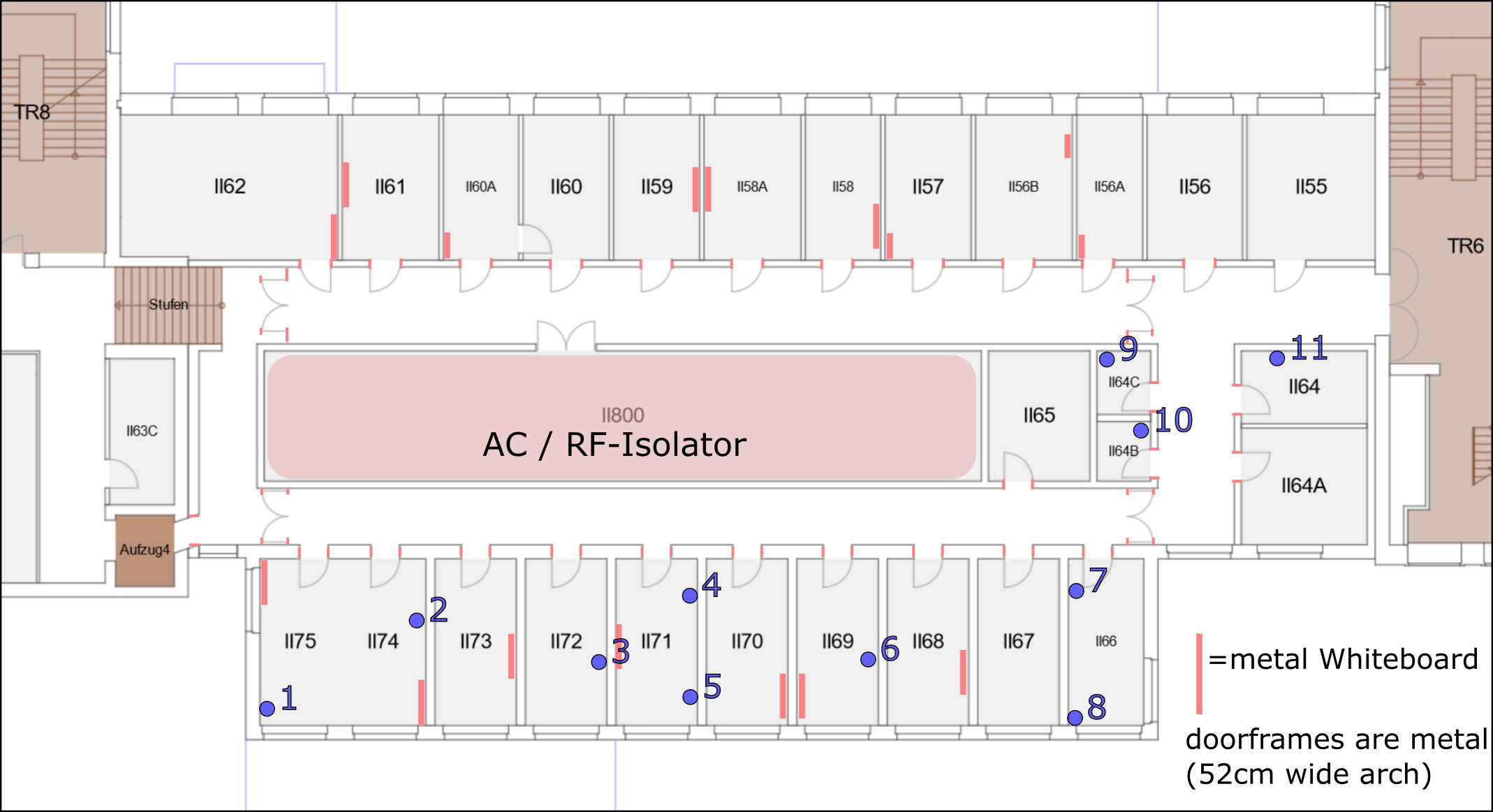Instance at TU Dresden#
For now (Mai 2025) the testbed is reshaped to mimic an elongated multihop mesh-network on the lower part of the office-map.
The initial deployment covered the ring of offices around the buildings ventilation system. The inner structure mostly blocks RF due to lots of metal vents. 10 - 14 shepherd observers were used for the testrun. Unfortunately the RF-Performance of the nodes was not strong enough to close the gap between II62 and II75 (left side of plan).
Deployment#
Below is a screenshot of the Campus-Navigator with marked node-positions.

CFAED floor with marked node-positions. Most horizontal walls are concrete, while the walls between offices are drywall.#
Link-Matrix#
The link-matrix of the testbed is currently measured mostly after changes in deployment. It is planned to offer weekly scans in the future while also keeping the history available.
Tx⟍Rx 1 2 3 4 5 6 7 8 9 10 11
+-----------------------------------------------------------------
1 | -43 -57 -80 -62 -73 -86 -84
2 | -43 -45 -64 -56 -78 -81 -73
3 | -59 -46 -52 -47 -65 -72 -68
4 | -79 -62 -50 -41 -57 -65 -62
5 | -61 -55 -45 -41 -56 -71 -73
6 | -73 -77 -64 -58 -57 -55 -56
7 | -85 -80 -70 -65 -70 -53 -53 -78 -70
8 | -86 -74 -68 -64 -74 -57 -55 -77 -81
9 | -79 -76 -60 -75
10 | -72 -81 -61 -81
11 | -75 -80
Changes in near Future#
Currently new hardware is manufactured, validated and calibrated.
With the official public release of the testbed in June 2025 it is planned to roll out an extended layout:

floor with marked future node-positions. Most horizontal walls are concrete, while the walls between offices are drywall.#
What does that mean for the user?#
number of observable GPIO from the target increases from 9 to 12, see table here
two power good lines to signal current state of the virtual source to the target (similar to Riotee) for more advanced intermittent computing algorithms
usable node-count increases from 11 to 20+ for enabling more complex scenarios and a wider range of topologies